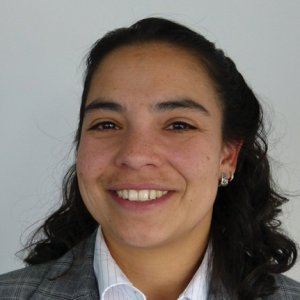Inside Perspective on Exploration and Reserves

STORY INLINE POST
Q: What have been the main exploration achievements over the past year, and which reserve volumes have been added?
A: Maximino was a good discovery in terms of reserve volumes and commercial potential. Exploratus, another well we drilled in the Perdido Belt, also has significant reserve volumes and has been a commercial and geological success because we confirmed the play’s potential. Probable and possible reserves were estimated in accordance to the definitions issued by the Society of Petroleum Engineers (SPE), by the committees of World Petroleum Council (WPC) and by the American Association of Petroleum Geologists (AAPG), and we are in the process of assessing the final reserves information internally. Once we begin delineating those fields or start field development, we will convert 3P reserves into probable and proven reserves. This will help the reserves replacement rate when we start field development. We finished our 2013 reserve estimates in all categories, 1P to 3P, and delivered this information to SENER and CNH. CNH’s final review regarding proven reserves was completed in March, announcing a 68% overall 1P reserves replacement rate and an 8% 1P reserves replacement rate from new discoveries. Regarding 2P and 3P, we have an internal number but we are not entitled to officially announce these numbers; we are expecting CNH’s final decision shortly, which should not differ much from our numbers. CNH is accepting our numbers and the certification letters from the companies that certified our reserves. We have worked with the most important independent auditors of hydrocarbon reserves, including Ryder Scott, Netherland, and Sewell & Associates which certified our reserves in the Northeast Marine Region and the South Region, and DeGolyer and MacNaughton which certified our fields in the Southwest Marine Region. Both their and PEMEX’s estimates have less than a 10% difference, which is in line with industry standards. In the past two years, our 1P replacement rate was over 100%, which was not the case in 2013. While a small proportion of our 1P reserves comes from new discoveries, around 90% comes from existing fields that are in production where reserves have been reclassified from possible and probable to proven. This is due to delineation activities through the drilling of strategic wells in the most remote parts of the fields to define reservoir behavior, as well as advances in increasing the recovery factor. Of this 90%, a last section comes from proven undeveloped reserves. Many fields in Chicontepec contain 2P reserves and once we drill wells we can convert these reserves from probable into proven. That is one of the main components of the reserves replacement rate.
Last year, the drilling program was halted in both Chicontepec and Burgos. In Chicontepec we had a budget problem in one of the regions. In order to pay for operations that were done off budget, we had to reallocate financial resources that were originally destined to pay for drilling operations. As a result, we did not drill the planned number of wells in Chicontepec. Of the 90% of 1P reserves coming from existing fields, maybe 40% was destined to come from Chicontepec before we stopped drilling in this area in May 2013. This also explains why we could not reach a 1P reserves replacement rate of 100%. We are optimistic that if we are able to drill those wells in Chicontepec, we will reach a 100% 1P reserves replacement rates this year. In the case of Burgos, we did not invest in areas where the cost of production was higher than the market price of natural gas, thus it seemed reasonable to halt operations. Since Mexico’s demand for natural gas is increasing, the new PEMEX administration decided in favor of producing at costs that exceed the market price in Burgos. Production costs in this area were around US$4.70 and the gas was selling at a Henry Hub price of around US$3.5-4. For every additional BTU of natural gas produced, we needed to pay an additional dollar. Yet this is cheaper than importing LNG at US$16-21 per million BTU. As a result, PEMEX reviewed its study and reallocated investment to the existing gas fields in Burgos to reactivate operations. This measurement took time and the decision was not made when it was most needed. This is the reason we did not include the proven undeveloped reserves in the reserves replacement rate.
Q: As a productive enterprise of the state, would PEMEX still have pursued such a strategy in Burgos?
A: If we had been business oriented, we would have stopped these gas developments long ago. Since we could not make such a decision, we moved to a minimum level of activity in Burgos in spite of knowing that our production costs were higher than the market price of natural gas.




















